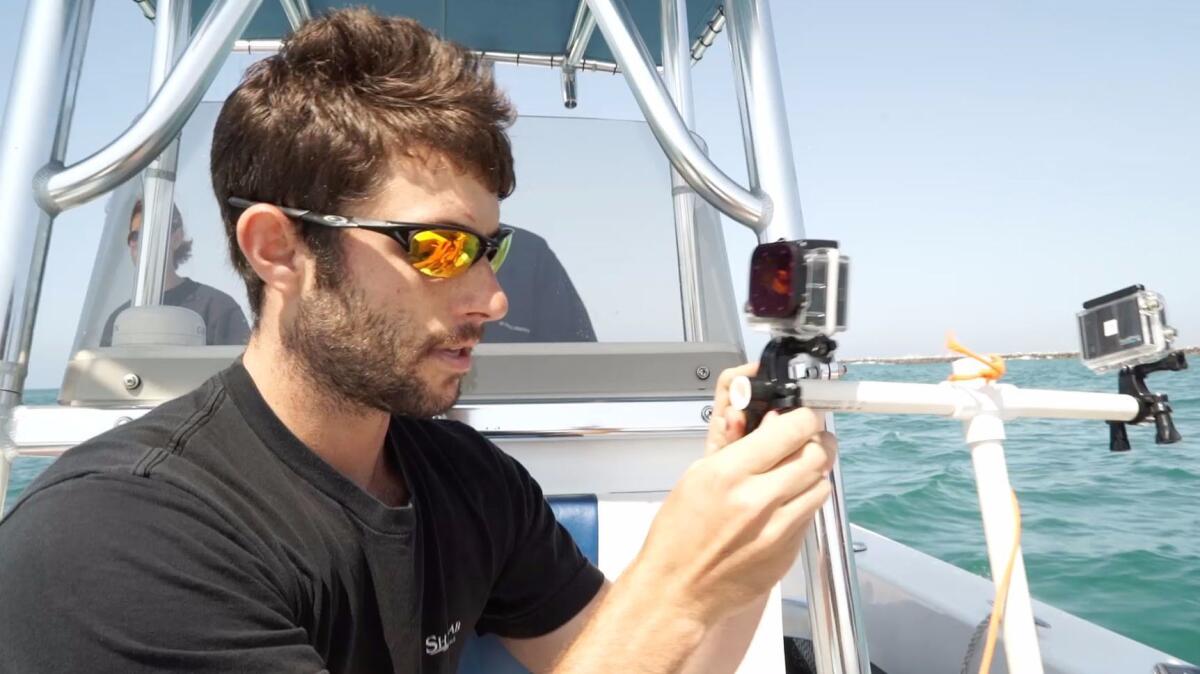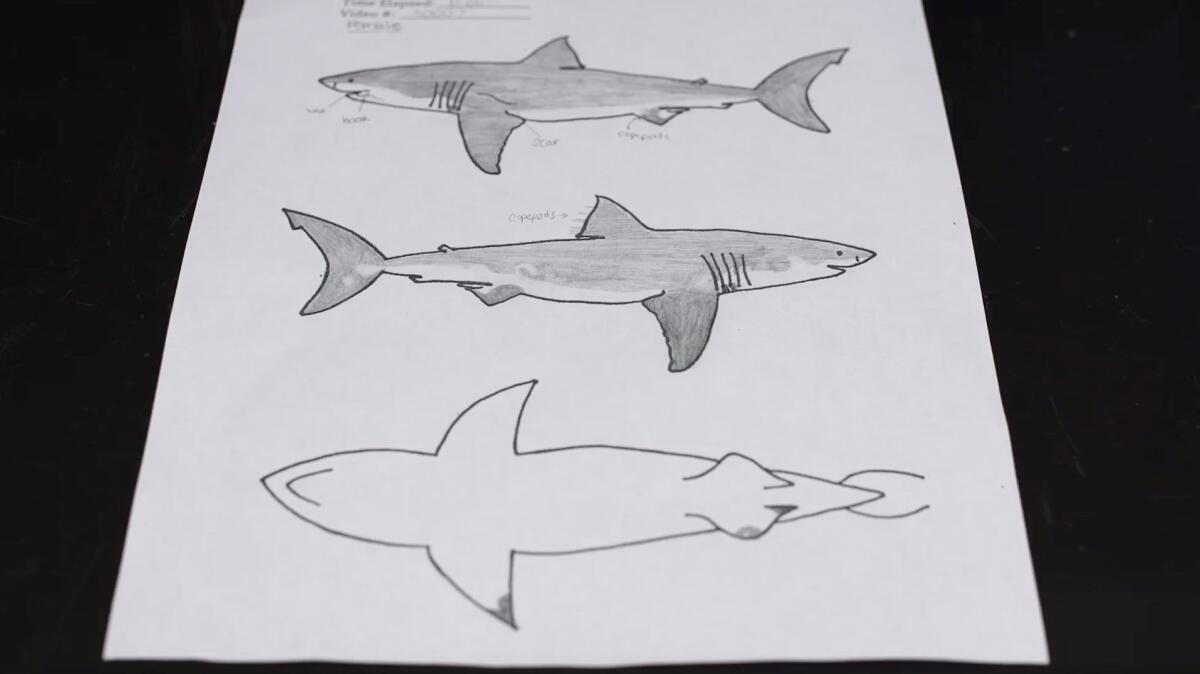Q&A: Cal State Long Beachâs Shark Lab chief talks about those great whites off the coast â and shark selfies

Sharks swim in 10 feet of water off Seal Beach.
It seems like every other week there is a shark sighting off the coast of Southern California.
Is there an uptick in the shark population, or are we, humans, making much to do about nothing?
Experts say state and federal protections have allowed the predator population to thrive over the last 20 years.
The California coast is now teeming with young sharks that are attracted to its safe and rich ecosystem, said Chris Lowe, director of the Shark Lab at
This is particularly the case off the Southern California coast, where young sharks feed off a rich supply of sting rays. (Pregnant white sharks give birth to their young in the warm waters off Baja and Southern California after a year long gestation in colder water.)
âItâs a nursery for young sharks,â said Lowe, a marine biology professor.
At the Shark Lab, Lowe and his students use acoustic and satellite telemetry techniques to monitor sharks. With this technology, his group can study the behavior, movement and physiology of sharks, rays and other fishes.
As part of his research at the Shark Lab, Lowe and his team also use underwater cameras to identify individual sharks.
The Times recently caught up with Loweâs team in Long Beach and he explained how they track sharks off the Southern California coast.
How do you capture videos of the sharks?
We place GoPros for the Remote Underwater Video Systems (RUVS) in 10 feet of water and they are stuck in the seafloor. We shoot video at 4k so the frame grabs are pretty high res. One camera is facing the beach and the other offshore. We turn the cameras on and let the sharks take their own selfies. We can then scrub the video and grab frames to identify unique facial features.
We turn the cameras on and let the sharks take their own selfies.
â Chris Lowe

How do you identify a shark?
Each shark has unique markings on their face, gills and tail where the white meets the gray. We can identify individuals by all those markings, but we need to be able to see both sides.

Has the prevalence of juvenile great whites changed off the coast of Southern California in recent years?
We think the population is increasing because 1) white sharks were protected from fishing since 1994 in state waters, 2) the adult favorite food â seals and sea lions â have come back, and 3) there is lots of food for the juveniles that hang out off our beaches â stingrays.
Sign up for Essential California
The most important California stories and recommendations in your inbox every morning.
You may occasionally receive promotional content from the Los Angeles Times.







